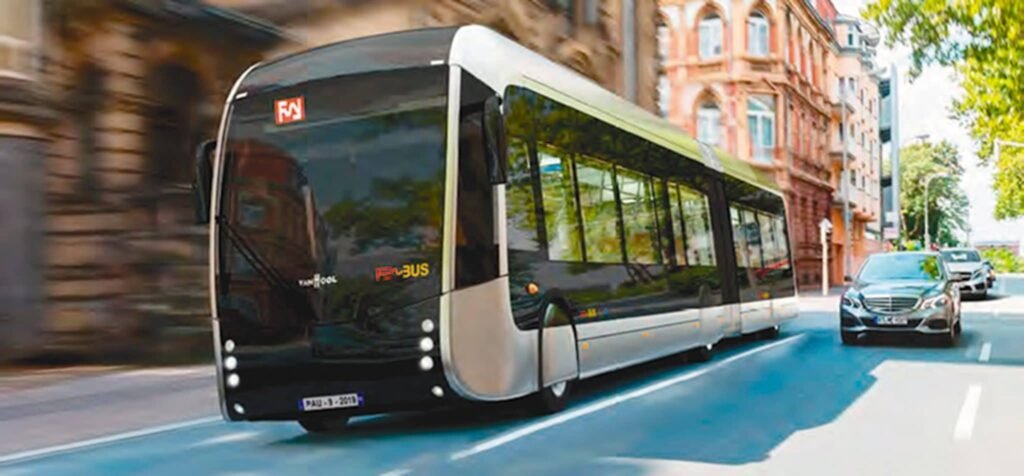Taxi, bus, stations, the achievements of hydrogen mobility are the most visible part of the sector, but, in parallel, the decarbonized industry and the production sector are settled everywhere in France. With the legislative framework implemented-CLIMAT-ENERGY law, hydrogen plan and multi-year energy programming (PPE)-oriented towards carbon neutrality and energy mix, hydrogen becomes an element of choice to achieve the set objectives and It spreads to the heart of our cities.
Political will
As indicated in the PPE, “you have to be ready to deploy French solutions in mainland France by 2030–2040 and ensure that they participate in the development of a competitive sector”. This implies improving massive storage and electrolysis technologies. By 2035, it is planned to prepare for the development and integration of the various technological bricks of the conversion of electricity of renewable gas by the realization of demonstrators of sufficient size.
Another axis “hydrogen in mobility”, complementary to batteries and biognv. Many projects are already emerging in the territories around fleets of light professional vehicles. By 2030, thanks in particular to the expected progress in terms of the cost of electrolysis, hydrogen decarbon distributed in station should be at a price level compatible with the needs of hydrogen mobility (less than € 7/kg, less than € 7 per 100 km). These advantages are found mainly in certain heavy transport (road, rail and river), for which the weight, the size and the on -board energy of the batteries remain penalizing to date. These heavy transports are a major lever to ensure significant hydrogen volumes and generate an autonomous ecosystem by economies of scale by allowing to deploy large stations more quickly. This is why the PPE plans to encourage the development of a range of heavy vehicles not only road, but also for other modes (boats, trains, aeronautics), and to continue the logic of territorial fleets.
Hydrogen is also, according to the PPE, “the massive storage means of the most promising intermittent electrical renewable energies currently”. It can also be used as a storage vector either by direct injection into the gas network or by methanation (production of synthetic methane).
All these elements allow the deployment and the achievements that we know today.
Following the “hydrogen plan”, ADEME retained 11 winners for the call for projects “hydrogen mobility ecosystems”.
AUXR_H2 : The Auxerrois community wishes to set up 5 electric hydrogen buses. The acquisition of a dozen hydrogen electric utilities for the needs of a regional construction company is also planned.
DS Energhy : Dijon Métropole wishes to set up a fleet of 8 hydrogen household dumpsters. Two heavy goods vehicles and 14 utilities will also be deployed by project partners. Hydrogen will be produced locally from electricity from the waste energy valuation unit.
Effies H2 Vannes : The Morbihan Energies union is associated with private partners to invest in a local hydrogen production unit for industrial needs and different uses in professional mobility (ambulances, light health vehicles, taxis).
FÉBUS : The Pau-Pyrénée agglomeration community is setting up 18-meter hydrogen buses this year. Hydrogen production will be done on site by water electrolysis.
Hydro : The agglomeration of Chaumont launches with its partners a local production and distribution of hydrogen. Minibus, householder dumpsters and light utilities are initially targeted, before expanding to a network of four stations on the territory.
HYNOVAR : In the periphery of Toulon, a consortium gathered around the CCI du Var is carrying out a hydrogen electric maritime shuttle project of 200 passengers. The operators of the public transport network of the Toulon Provence Méditerranée metropolitan area also wish to acquire hydrogen electric buses.
HYPORT : The Occitanie Regional Council and its partners invest in a hydrogen production and distribution solution around Toulouse-Blagnac airport, serving vehicles on tracks and vehicles for urban uses.
H2 IDF : The Île-de-France energy union Sipperec is committed with its partners in a hydrogen production logistics from the electricity provided by the site of the Energy Valorization Unit of Créteil. This local hydrogen will feed buses, light utilities, household waste dumpsters or taxis.
LAST MILE IDF : Akuo Energy and Atawey companies intend to deploy 16 hydrogen production and distribution stations in Île-de-France to supply 200 utility vehicles and 80 vans for professional use, including the transport of goods.
Loan : The La Rochelle agglomeration community wishes to enhance part of the photovoltaic production of the Atlantech eco -neighborhood in the form of hydrogen to supply around twenty utility vehicles and scooters. The rental of vehicles, delivery and messaging services are the applications referred to by this project.
ZEV : Carried by the Auvergne-Rhône-Alpes Regional Council and the Michelin and Engie companies, this project wishes to deploy 1,200 vehicles and 20 stations, 14 of which will be equipped with electrolysis.
Two other calls for projects have been launched, with results that should be announced at the end of the year. One concerns the production and supply of decarbon hydrogen for manufacturers, the other targets projects promoting renewable electricity storage in overseas territories or non-interconnected areas (ZNI), for example Breton islands.

